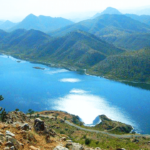India is known for its valiant warriors. We battle for what is rightfully ours. Our Indian army is full of such warriors, and when we defeated Pakistan in the Kargil War in 1999, the world witnessed our Indian army’s valour. Kargil Vijay Diwas is observed all over India to commemorate this triumph.
It has been 18 years since India defeated Pakistan in the Kargil conflict in Kashmir on July 26, 1999. Since then, the Kargil Vijay Diwas has been observed. The Indian military forces had given their all in such a harsh climate and at such great heights to reclaim our nation, which had been occupied by Pakistani troops.
The Kargil battlefield is one of the highest and dangerous battlefields in the world. The war was fought in the Tiger Hill region located in the Kargil town 205 km away from Srinagar. The nights here are long, and the temperature used to drop to -48 degrees Celsius. The Pakistani Army wanted to cut the connections between Ladakh and Kashmir and later occupy Kashmir slowly.
- Pre-War Situation
During the winter of 1998-99, the Pakistani Army began secretly training and dispatching troops near Kargil in order to gain control of the region and claim the Siachen Glacier. They were not Pakistani soldiers, but Mujahidin said the Pakistan Army. Pakistan hoped to draw international attention to the disagreement in order to put pressure on India to withdraw its troops from the Siachen Glacier region and discuss a solution to the Kashmir dispute. It was later discovered that Kashmir militants were also included. Because the battlefield was at a high altitude, carrying weaponry and other supplies posed a logistical challenge for the Indians.
- India Strikes Back
The Pakistani soldiers first crossed the Line of Control, or LOC, and entered the India-controlled territory. Later, the army was alerted by local shepherds who reported suspicious people crossing the LOC. To investigate further, the Indian Army dispatched extra troops from Ladakh to the Kargil region after learning that the Pakistani army had crossed the Line of Control and invaded the India-controlled territory. Both soldiers opened fire in an attempt to reclaim the land. Later, the Indian Air Force joined the battle to clear the valley of any intruders.
- The Kargil War is won by India.
Pakistan withdrew its soldiers from the LOC area in response to increased attacks by the Indian army and pressure from then-US President Bill Clinton. The Indian army recaptured all of the positions that the Pakistani army had attempted to take. This two-month battle came to a conclusion on July 26, 1999, when the Pakistani army declared its withdrawal from the disputed territory. Operation Vijay was the name given to this operation. Captain Vikram Batra and Major General Ian Cardozo of the Indian Army bravely commanded the outpost on July 26, 1999, which was dominated by Pakistan.
Pakistan was heavily chastised worldwide for violating the LOC code and attempting to seize control of the disputed territory. All of the countries complimented India for adhering to the LOC and successfully waging the war. As a result, every year on July 26th, Kargil Vijay Diwas is observed. On this day, India’s Prime Minister pays honour to all of the nation’s fallen troops at the Amar Jawan Jyoti. Everywhere we go, we feel patriotic. Army stunts and a parade are performed to pay honour to the martyrs and to demonstrate the strength of the Indian Army.
The Indian Army is always prepared to defend the country in every crisis or circumstance, including combatting terrorism, natural disasters, terror attacks, and curfews. The Kargil War is one such event that will never be forgotten. ‘The Indian army is like a mother who gives without expecting anything in return. Our Army’s valiant sacrifices will not be forgotten, and they will continue to inspire us.
- What is Kargil Vijay Diwas and Why is it Celebrated?
The Kargil Heros are held in great regard, and Kargil Diwas is commemorated. The Prime Minister of India and the Indian Army pay homage to the soldiers who were martyred during the war at the Amar Jawan at the Delhi Gate. Colleges and government institute host functions and flag hoisting is performed. The tricolour is displayed everywhere, and children wear pinned badges in their pockets to express their patriotism. Speech, essays, debates, elocution, and other activities are held in schools to demonstrate patriotic feelings. The parade and the Army officials’ stunts are two of the key events that people look forward to seeing. The Indian Flag’s colours may be seen all around the country, illuminating historical sites. There is a strong sense of patriotism in the air.
Feature Image credits: jagran




